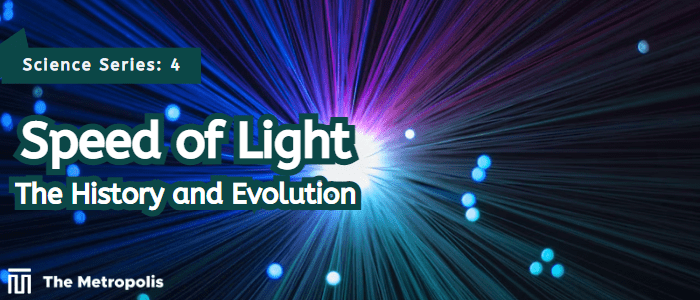Aziz Hawaldar –
The speed of light is a fundamental constant of nature and is one of the most important physical constants in science. Before the 17th century, the majority of scientists, including luminaries like Rene Descartes and Johannes Kepler, believed that the speed of light was infinite and that it could cover any distance instantly. One of the first people to challenge this presumption and make an experimental attempt to determine the speed of light was Galileo Galilei.
Galileo’s procedures were incredibly primitive by today’s standards. With a lamp that could be concealed and unveiled at will, he set up shop on one hilltop and with a helper (Massimo) on a different hilltop. As soon as his aide noticed the light from Galileo’s lamp, he would turn it on and do the same. Galileo could determine the speed of light by measuring the amount of time that had passed between the two flashes and knowing the separation between the two lamps. Unsurprisingly, he came to the following hazy and ambiguous conclusion: “If not instantaneous, it is extraordinarily rapid”. Yet he concluded that light moves at least ten times more quickly than sound.
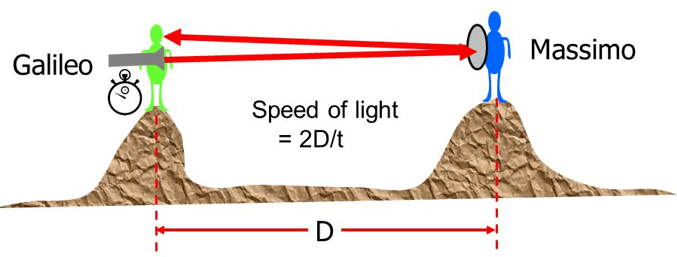
Over the last few centuries, a large number of experiments have focused on determining the speed of light. In the 17th century, the first serious attempts were made to measure the speed of light. Since then, scientists have created more precise techniques for calculating this figure.
The Danish astronomer Ole Rømer conducted one of the earliest attempts to measure the speed of light in 1676 while working at the Royal Observatory in Paris. Rømer noted that it appeared that the Earth’s orbital location was affected when the eclipses of Jupiter’s moons occurred.
Rømer observed the eclipses of Jupiter’s moons to make his observations. The eclipses happened a little bit earlier than expected when Jupiter was closest to Earth. The eclipses took place a few minutes later than expected when Jupiter was the furthest away from Earth. He rightly concluded that this impact stemmed from the fact that the light from those moons traveled a longer distance when Earth was farther away rather than from an actual shift in their orbits. He was aware of the recognized estimate for the diameter of the Earth’s orbit at the time and thus deduced the speed of light to be 240,000 kilometers per second from that.
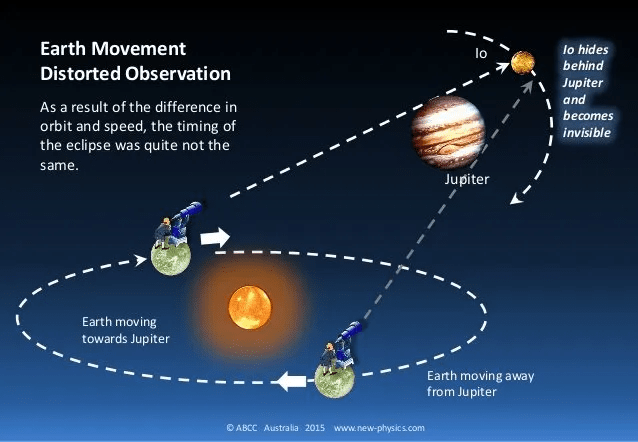
Rømer’s measurement was still off from the true value, but it offered a helpful starting point for subsequent tests. James Bradley, an English scientist, used stellar aberration to determine the speed of light in a vacuum. He determined it to be 301,000 kilometers per second in 1728. The measurements were improving. But it would take another 100 years for a French researcher by the name of Armand Hippolyte Louis Fizeau to discover how to measure the speed of light using a terrestrial experiment.
In 1849, Fizeau built an apparatus in which a cogwheel and a mirror were placed eight kilometers apart and then sent pulses of light between them. When he spun the cogwheel very quickly, the reflection from the mirror was blocked because the light had hit one of the cogs, so he would watch how quickly the light beam moved between the cogs of the wheel and the distant mirror.
Fizeau proposed that the time required for the wheel to turn one cog’s width was equal to the time required for the light beam to travel to and from the mirror. Fizeau was able to determine the speed of light by using his knowledge of the cogwheel’s rotational speed, the breadth of a single cog, the distance to the mirror, and other factors. He came up with the number 313,300 kilometers per second. This was still around 5 percent excessive.
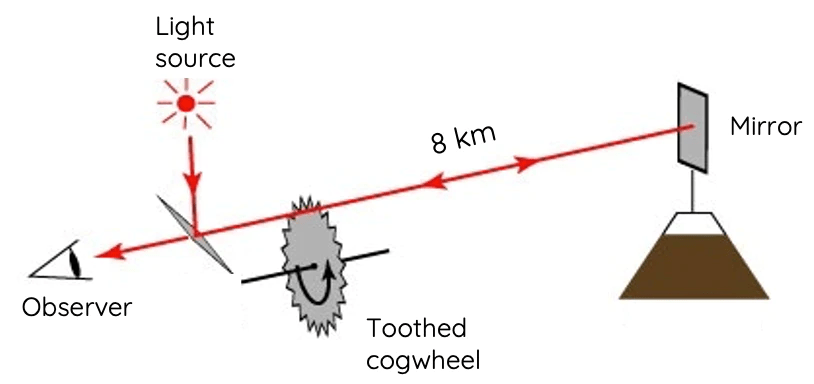
French physicist Jean Bernard Léon Foucault improved Fizeau’s apparatus slightly, replacing the cogwheel with a rotating mirror – hence it was known as the Fizeau-Foucault Apparatus. It was feasible to measure the difference between the angle of the light as it entered the apparatus and when it exited the setup and compute the speed of light from that because both the speed of rotation and the distance to the mirror were well known. The speed of light, according to Foucault, is 299,796 kilometers per second as of 1862.
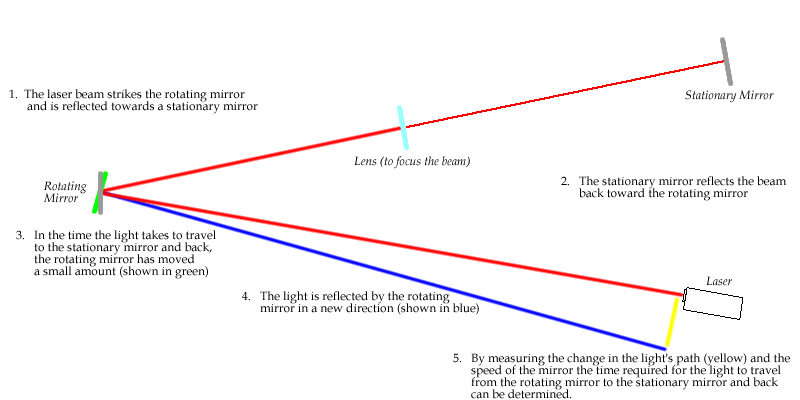
Fizeau has made other contributions to science than the measurement of the speed of light. His further measurements of the path taken by light through flowing liquid led to a startling realization: the speed of light did not alter as one might expect when passing through a moving medium. The speed of light was already known to vary depending on the medium, but before Fizeau’s investigations, scientists thought that if a medium was moving, the speed of light could be calculated by simply adding the medium’s velocity to that of the light. His findings suggested an alternative formula, which Albert Einstein would later clarify while creating his theory of special relativity.
The German-born American physicist A.A. Michelson set the early standard for measurements of the speed of light in the late 1870s. He determined the speed of light in air to be 299,864 ± 51 kilometers per second and estimated the speed of light in a vacuum as 299,940 kilometers per second. However, Michelson’s most important calculations of the speed of light were still to come. This measurement, which was performed in Annapolis by timing a light burst moving between mirrors, was in good agreement with less precise measurements based on astronomical observations. Still, this did not clarify the nature of light.
In 1923, Michelson surveyed a 35-kilometers pathway between two mountain peaks in the California mountains, determining the distance to an accuracy of less than 2.5 cm. Using a unique eight-sided rotating mirror, he calculated the velocity of light to be 299,798 kilometers per second. He used a long-evacuated tube to reflect a light beam back and forth until it had traversed a vacuum for 16 kilometers to further refine the situation. Michelson passed away before his last experiments’ results could be assessed, but in 1933, the final figure — which was less than 2 kilometers per second higher than the value recognized in the 1970s — was announced.
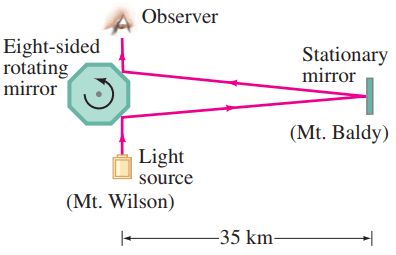
The speed of light can be determined by observing the interference pattern formed by two light beams, one of which travels a predetermined distance. In his measurements, Michelson was able to reach an accuracy of 1 part in 100,000.
James Maxwell’s scientific discovery of electromagnetic in the 1860s opened the door to a new method of calculating the speed of light. In 1907, American physicists Rosa and Dorsey employed the electric permittivity and magnetic permeability constants to determine the speed of light as 299,788 kilometers per second. This technique was different from previous ones in that it did not call for the measurement of light’s flight time.
Later in 1958, British physicist Keith Davy Froome studied the interference pattern of radio waves to obtain the speed of light as 299,972.5 kilometers per second.
In 1973, Evenson along with his team utilized lasers with high spectral stability to measure the speed of light as 299,972.457 kilometers per second. Like Froome, this experiment also involved interferometry to measure the wavelength of light.
This technique involves firing a laser source into a half-silvered mirror, which splits the light ray into two perpendicular rays that pass to two stationary mirrors and return. The two light rays will return in an equal amount of time since the two stationary mirrors are equally spaced from the half-silvered mirror. They will suffer constructive interference when they come together in the middle, creating a new wave with double the amplitude.
To increase the distance between one of the stationary mirrors and the half-silvered mirror, the experiment is now repeated with that mirror’s position changed. There won’t be any waves observed when the mirror is moved back exactly half the wavelength of the light wave because destructive interference between the two waves will result.
In laser interferometry, a laser source with a known frequency is employed, and the laser’s wavelength is calculated by calculating how far the stationary mirror must be moved to produce destructive interference. The wavelength and frequency are then multiplied to determine the speed of light.
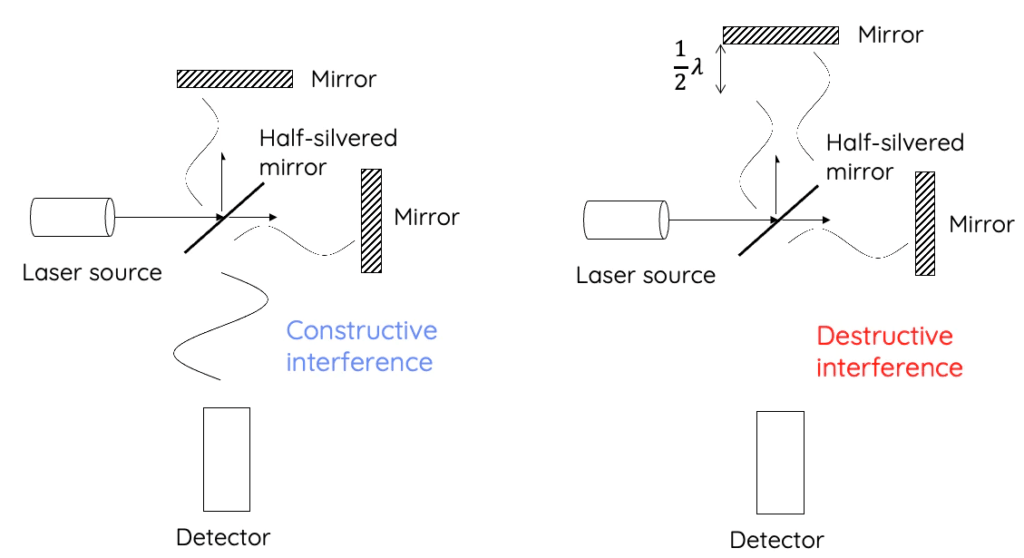
According to a 1983 proclamation by the 17th General Congress on Weights and Measures, the value of the speed of light is specified as 299,792.458 kilometers per second, making the meter a derived quantity. A tribute to the cooperative nature of the scientific effort, it only required about 163 independent tests involving more than 100 scientists.



